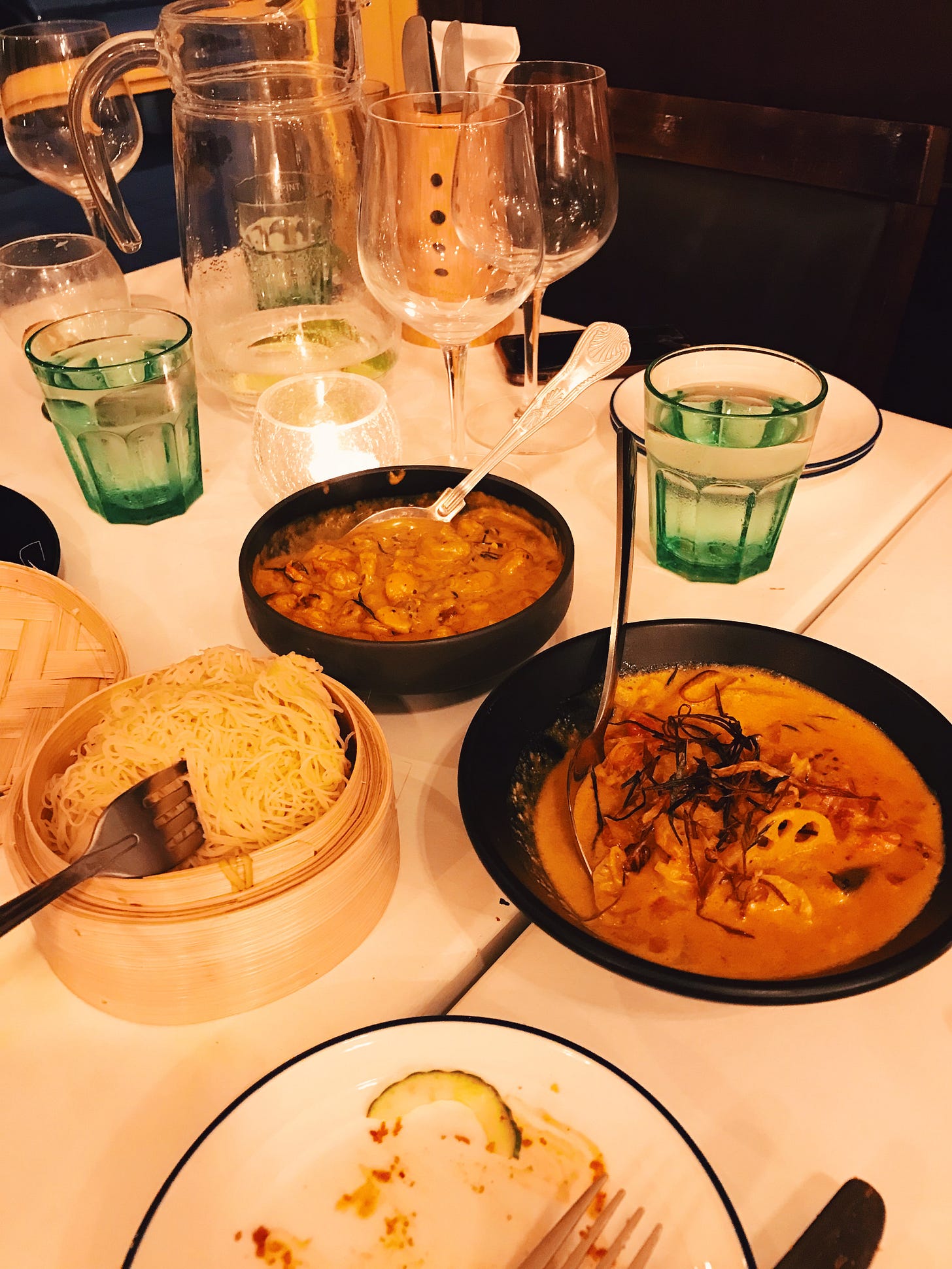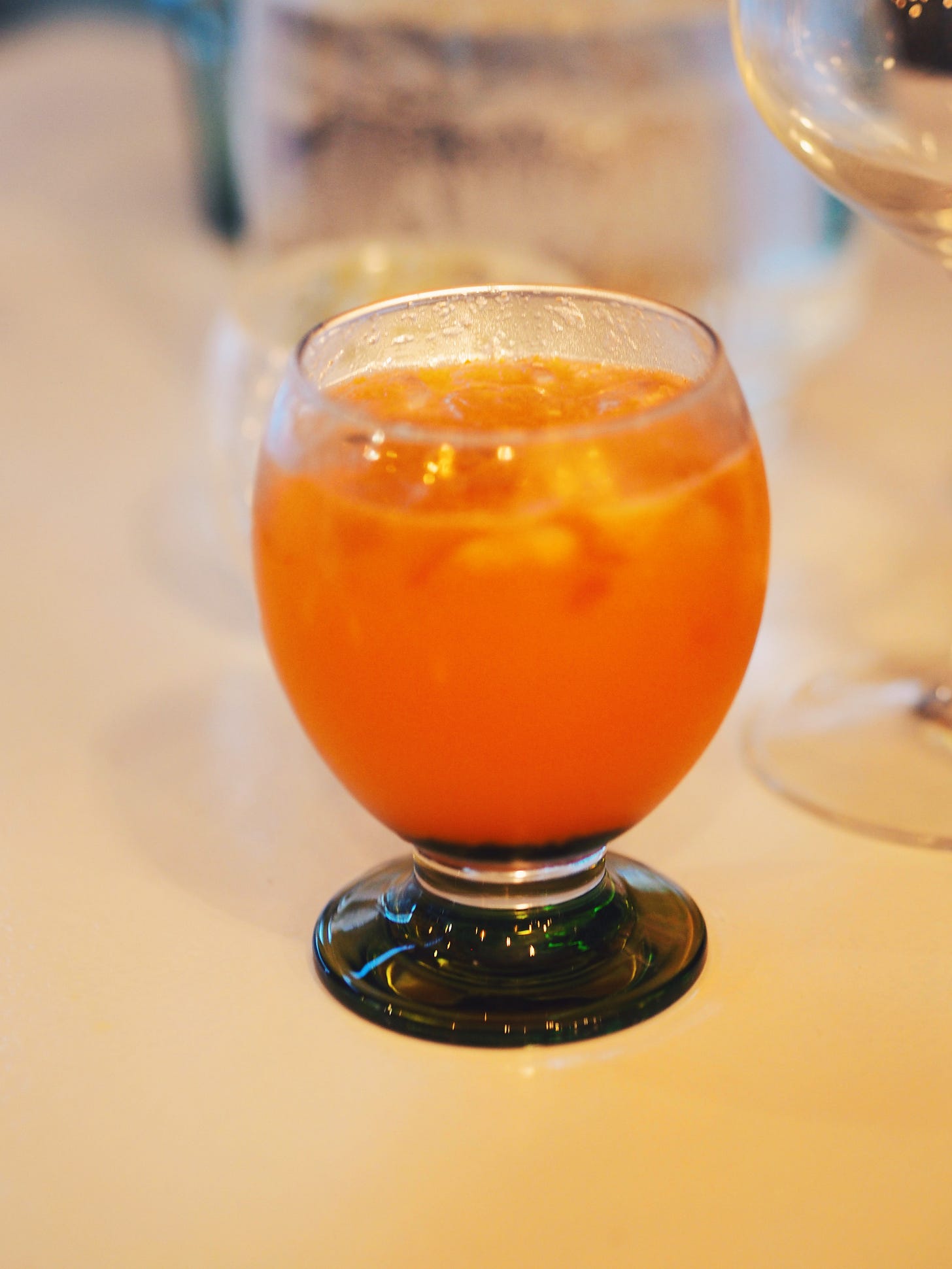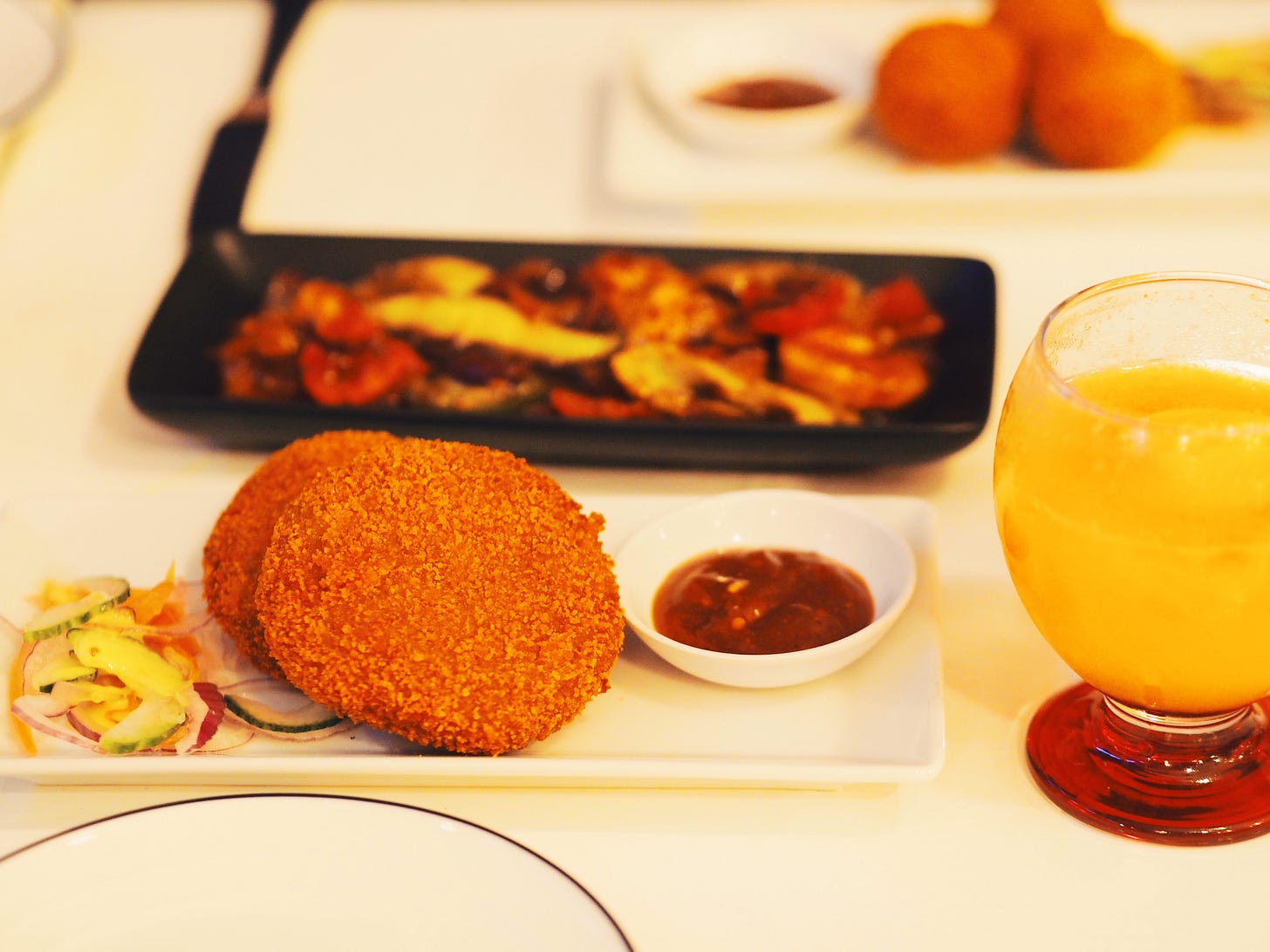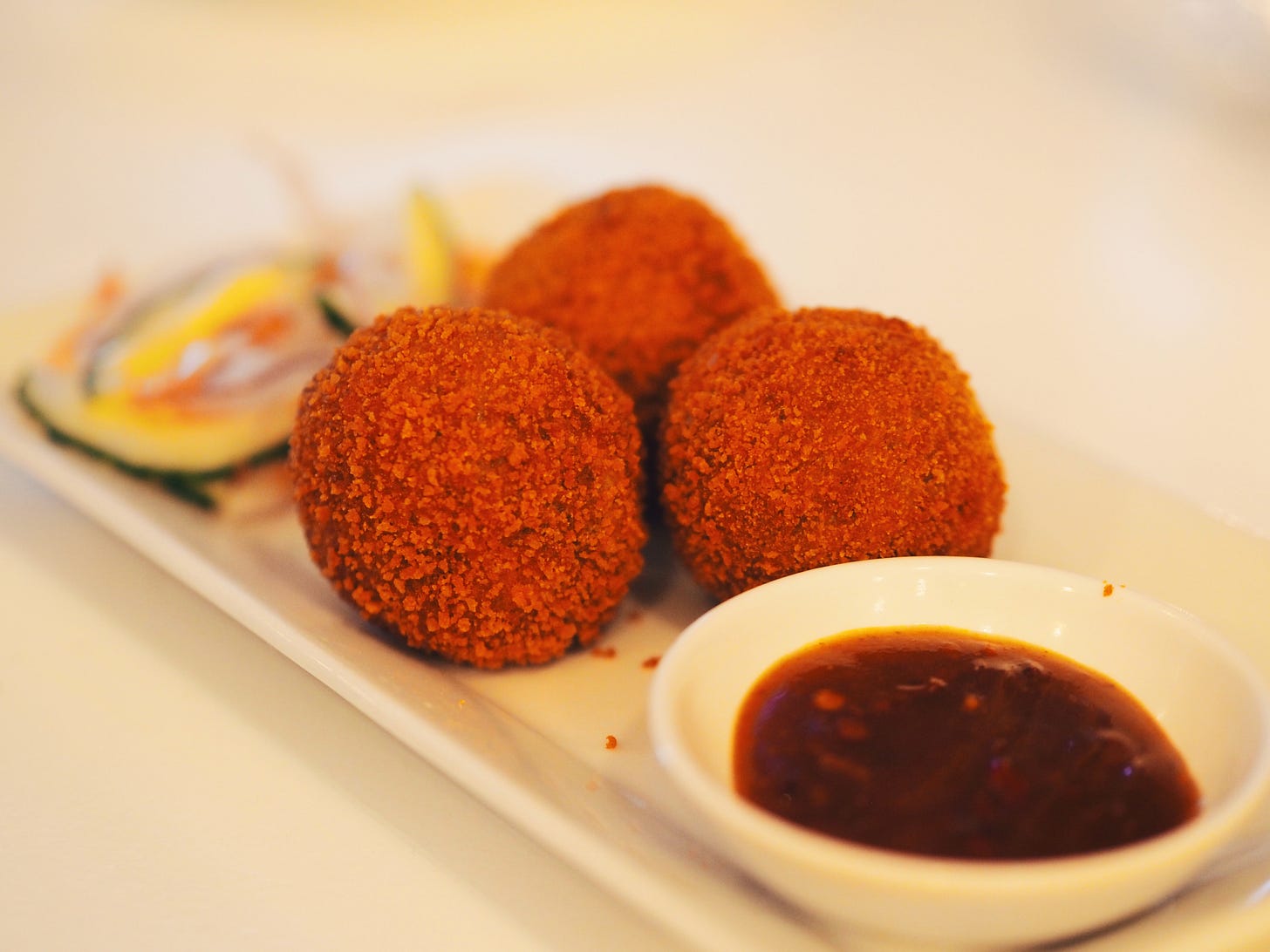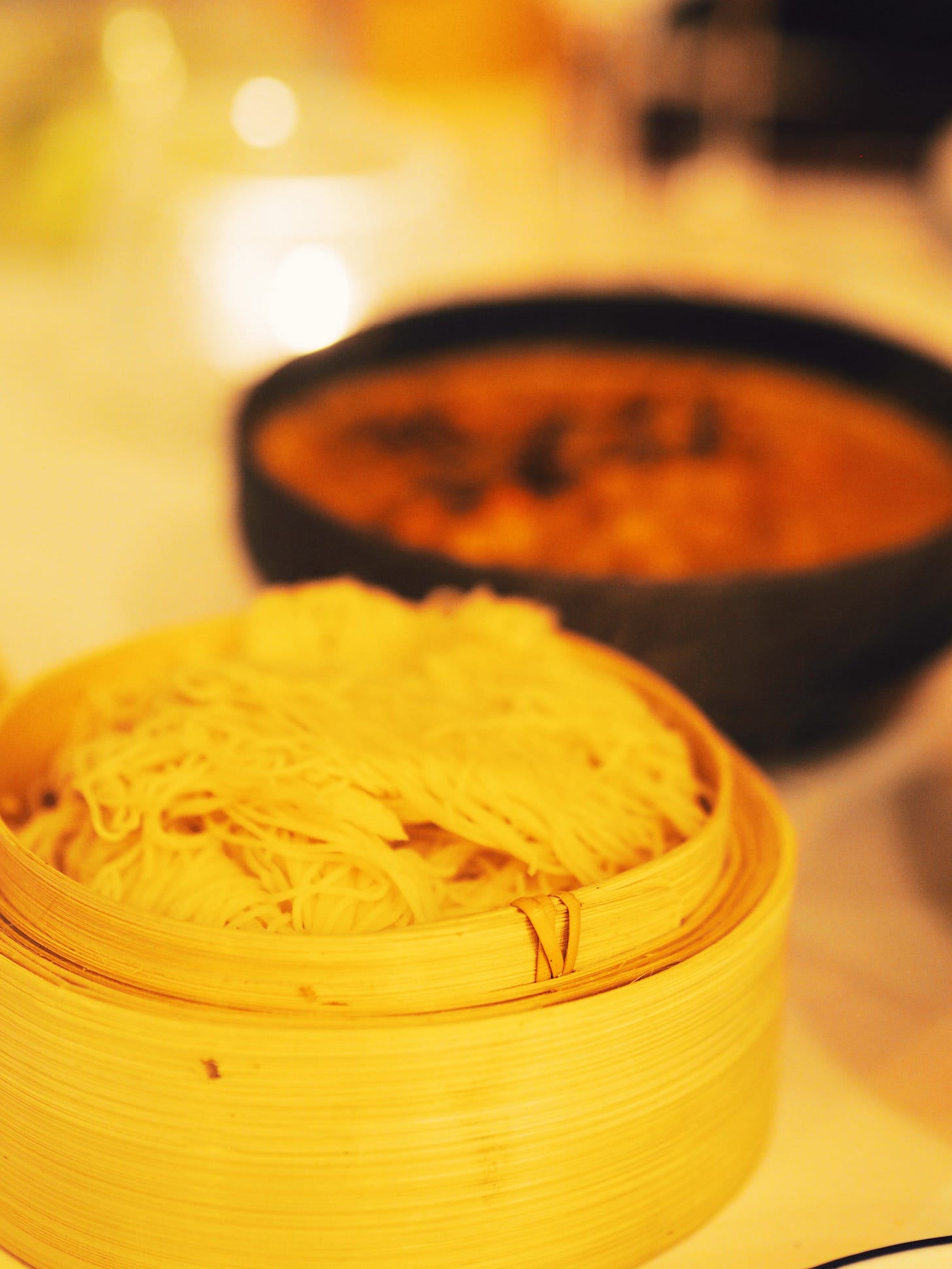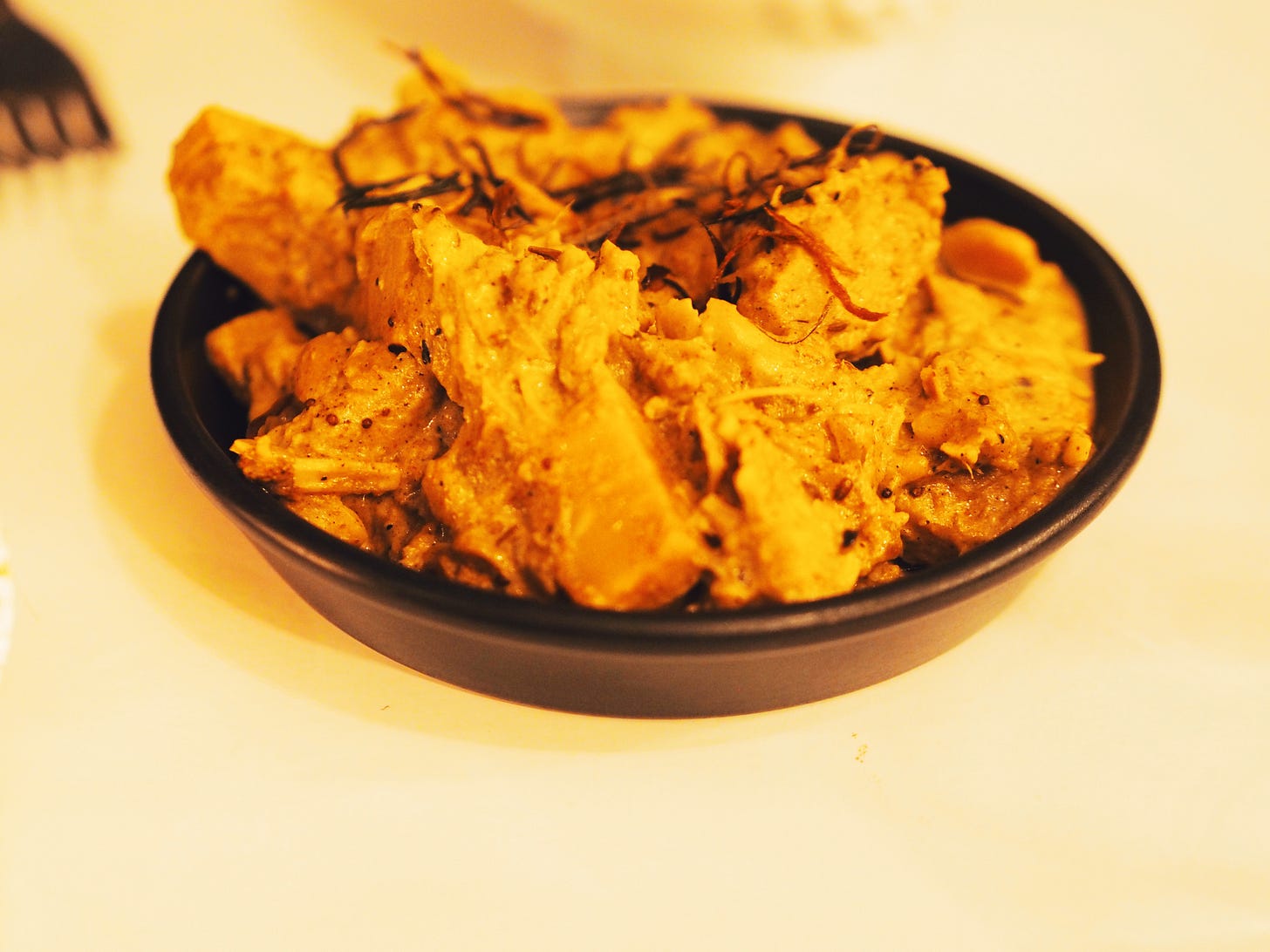It’s a grey, humid Saturday night in August, and Croydon’s South End is much as I remember it. As I walk down the scruffy street, sweating in the close evening air and swerving around rowdy groups of people clutching cans, it occurs to me that I haven’t missed the place much. It isn’t often that I feel any inclination to return to my hometown, but a friend of Sri Lankan heritage had recently raved about a newly-opened Sri Lankan restaurant on the South End. Having previously expressed to her a desire to learn more about Sri Lankan cuisine, of which I confess myself to be largely ignorant, I couldn’t turn down her invitation to dine there.
On entering the restaurant, there is immediate respite from the street, though. I am greeted warmly by the staff, and the ambience provides a pleasant and contrasting sensory experience to the world outside. “Sri Lankan Beach Party” is how the restaurant’s website describes the place. I have never been to a Sri Lankan beach party, but the atmosphere is lively, upbeat, warm; the walls are adorned with artwork depicting Sri Lankan cultural items or scenes, the ceiling strung with outdoor fairy lights, and sections of the restaurant certainly have beach-style decor with raffia panels and chairs. Moreover, the place is packed. Although it has barely been open two months, the restaurant has clearly made an impression already. But then, this isn’t the founders’ first rodeo; they have previously run other restaurants in and around the area (Yaalu Yaalu was a popular local spot), before closing those to focus on launching one centrally-located Croydon restaurant. Equally, Sri Lankan cuisine is relatively well-established in Croydon; K+K Streetfood and Spiceland both come to mind. Clearly, the local public had a ready appetite for this latest offering.
I squeeze past packed tables to reach my party at a table by the window, and begin by ordering the ‘Old Ceylon’ cocktail - a blend of old arrack, coconut essence, coconut water, cinnamon and passion fruit. It’s sweeter than I normally like, and very weak; it reminds me of the kind of drinks I drank in beach bars and cheap nightclubs in a bright bodycon dress aged 18, but there is a lot to be said for the combination of flavours. Arrack, my friend explains, is a whiskey made from the coconut palm, and is the drink of choice for old men. My brother orders a glass of it neat, and observes that it tastes like a blend of rum and whiskey. I cannot describe it better than that; its coconut palm origins give it that rich, warm, golden flavour of rum with the fire and aftertaste of whiskey. It is very drinkable neat, and I’m no old man.
As we sip, I let my friend guide me through the menu, the ingredients, and the history. Although the restaurant describes itself simply as “Sri Lankan”, the food is more truly described as Sinhalese. Tamil food, by contrast, shares more similarities with Indian cuisine, and indeed many self-styled Sri Lankan restaurants in the UK include Indian dishes on their menu because white people kept asking for kormas and tikka masalas, being too ignorant to appreciate the nuances of the region, its culture, its peoples, and its food. Machan Kitchen is more orthodox in that sense; bar one or two off-piste items, the menu is strictly rooted in Sri Lanka, and doesn’t feel the need to pander to Western miscomprehension. Incidentally, my friend explains that Machan means “brother” or, more literally, “bro”. It feels a fitting name for such a laid back restaurant.
There is no shortage of vegan food on the menu. Dairy products being expensive in Sri Lanka, and coconuts being abundant, most savoury dishes are vegan if they do not contain meat. The menu is alive with the plants and spices of the region - banana blossom, coconut, cinnamon, jackfruit, cashews, tamarind, lotus root, curry leaves. Like every people’s food, Sinhalese cuisine is a product of both its natural environment (ubiquitous coconut palms and banana trees, proximity to the sea, the abundance of spice) and its history - Malay, Portuguese and Dutch influences are all pointed out to me. After all, it is precisely that abundance of spice that drew the Portuguese and the Dutch, among others, to the East for trade and for conquest in the early-modern world; that the legacy of the spice trade and colonialism have influenced the cuisine is hardly surprising. And yet, the food retains its own unique identity, absorbing and transforming the foreign rather than being transformed by it.
I begin with the jackfruit cutlets, as per my friend’s recommendation. Spiced jackfruit and potato are deep fried in breadcrumbs and served with a spicy tamarind dip; they are similar to croquettes, some variation of which can be found in cuisines all over the world. The jackfruit, the spice blend, and the tamarind put the Sri Lankan stamp on these, though, and they are as crisp and tasty as one could hope for. My friend and my brother opt for the fish cutlets, which are the same but contain aromatically-spiced mackerel rather than aromatically-spiced jackfruit.
For the mains, we order several small curries to share, to taste as many as possible; a jackfruit curry, a lotus root curry, and a cashew curry. My companions also try a slow-cooked goat curry with yaalu yaalu herbs. String hoppers - nests of noodles made of rice or wheat flour and water - accompany the curries.
Service is exceedingly slow; we wait an hour between our starters and mains. However, I am enjoying the vibrant atmosphere and the company, so have no cause for complaint; in any case the restaurant is packed and clearly understaffed. The staff who do serve us, though, are unfailingly polite, friendly, and knowledgable about the food - and deeply apologetic for the delay. Like many places currently, they are struggling to find staff.
When the mains do arrive, I cannot fault them. Each is beautifully spiced, rich, creamy, intensely aromatic and perfectly cooked. My palate is not attuned enough to the region’s spices to discern the exact spice blend used in each, but it is faultless. The jackfruit is tender; the cashews soft and delicate; the lotus root crunchy and aromatic. The Malwana cashew curry is the standout winner for me though - intensely creamy and beautifully seasoned. Whatever the “secret spice blend” is comprised of, it is perfection. Anything we can’t eat is boxed up for us, and like many curries, tastes even richer when reheated for my lunch the next day, the intense flavours having had an additional 18 hours to mature.
There are no vegan desserts, but for non-vegans, the most traditional offering on the menu is watalappan, a spiced and steamed coconut custard pudding brought to Sri Lanka by Sri Lankan Malays in the 18th century, when Indonesia was under Dutch colonial rule, and now a popular national dessert. The staff are happy to do a fruit plate as a vegan dessert for me, which sounds delicious but I am already more than full, and content to slump back in my chair, listening to the chatter, observing the fairy lights, the raffia and the paintings, and taking another sip of arrack. If this is a Sri Lankan beach party, then sign me up. I’d return to Croydon on any rowdy, muggy, grey summer evening for this.
—
Currently…
Reading: A Fistful of Shells by Toby Green
Eating: this low-sugar granola
Enjoying: Pick Up Limes’ beautiful video + fundraiser highlighting Afghan food and cuisine




